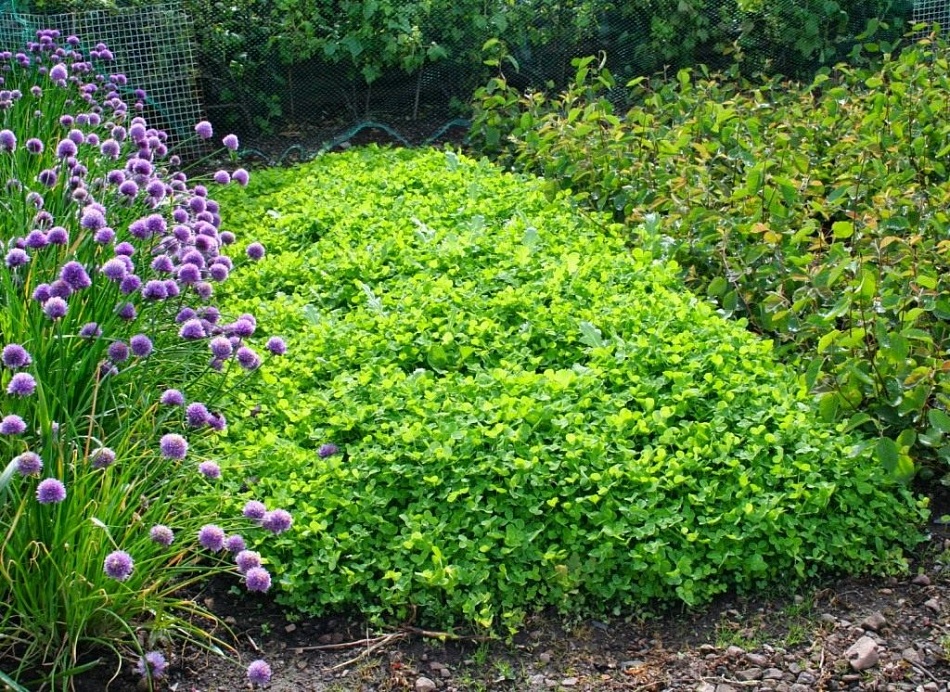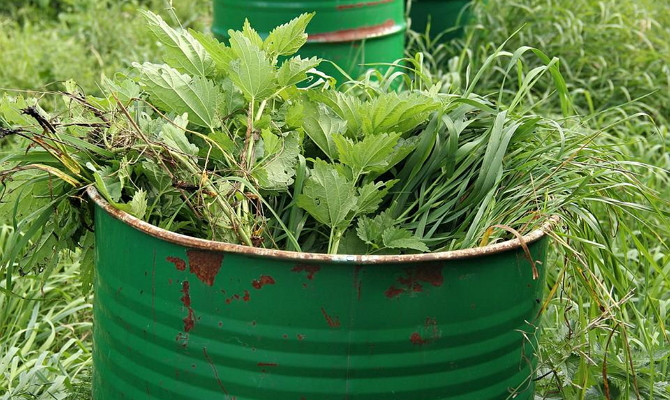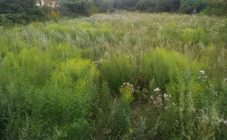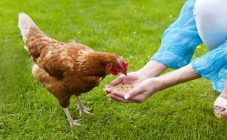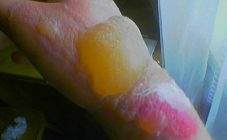Content:
All cultivated plants do better when fed. Novice summer residents are trying to buy ready-made combined complexes. They are, of course, good, but do not forget about the more affordable (almost free) organic. What is grass fertilizer with water and how to apply it should be discussed.
Green manure
In the classification of organic fertilizers, there is such a wording - green plant food from grass. It immediately becomes clear what lies at the heart of the nutrient.
Experienced farmers already know what can be made from grass. The cut weeds are processed using humus. Raw materials are laid in compost heaps, alternating with peat, manure, food waste, etc. The tops of garden crops are also used as a green fertilizer.
An excellent top dressing from grass for plants is green manure - a plant mass plowed into the ground directly on the future bed. This fertilizer is nutritionally equivalent to fresh manure. Once in the soil, green manure decomposes gradually, restoring its structure. They also provide plants with better assimilation of hard-to-reach forms of mineral elements of the earth.
Popular green manure
| Type of grass | Features: |
|---|---|
| Lupine | · The most commonly used green manure. In a short time, it improves the composition of the soil, lifting all nutrients from the depths. Nodule bacteria live on the roots of the plant, enriching the soil with nitrogen (they give about 100 kg of an element per 1 ha); Seradella has the same properties |
| Alfalfa | It has a powerful root system that penetrates deep into the soil. This herb is more often used in poorly cultivated areas. |
| Nettle | This is the most complex of all green fertilizers - it enriches the land not only with nitrogen, but also with various macro- and microelements |
There are other green manure plants loved by gardeners: white mustard, oil radish, mouse peas, vetch, rye. They can be sown on the beds after the main harvest, in order to start digging in the spring.
Legumes are good: peas, chickpeas, beans, lentils, soybeans. Do not remove them from the garden when autumn comes. The tops of these plants are excellent green fertilizers.
For the cultivation of the listed herbs, you can select a permanent separate area and periodically mow it, using the green mass as mulch in the beds, or harvest fertilizer for future use. Then the territory will not need to be plowed - let the cultures develop on their own.
Fertilizer preparation and feeding
Some summer residents, collecting grass, simply lay it out in the beds as mulch. More experienced people prefer to prepare humus from raw materials. By keeping the grass for several months, compost is obtained. A faster option is liquid fertilization.
Composting
Weeds are collected in a common heap with other components, shifting them in layers. The whole process takes about 3-6 months. In addition to weeds and green grass, it is recommended to add leaves that a tree or bush sheds, vegetable tops, branches, sawdust to the compost.The nutrient composition will be enriched in ash, food waste and especially manure.
Before adding a new layer, the compost must be turned over so that the fermented bottom layers are at the top. This speeds up the decay process. The compost is periodically moistened - the bacteria involved in the process need water.
Grass processing will go faster if you follow these rules:
- it is necessary to constantly maintain the humidity and high temperature of the compost;
- you can insulate the pile by adding a little chicken droppings;
- before laying the grass and other elements, it is recommended to grind them - fermentation will go faster;
- the more often you shovel the pile, the sooner you can get compost.
The readiness of the humus is judged by the looseness of the composition, the dark brown uniform color and the pleasant forest aroma. If there is a moldy smell, the fertilizer is not suitable for garden use.
Liquid compost
Some gardeners use plastic bags in practice. Others are wondering how to make compost out of grass in a barrel. Under certain conditions, you can significantly accelerate the decay process and get high-quality liquid compost in a month and a half. To do this, it is enough to follow this technology:
- first of all, they choose a suitable container - a 200 l barrel will be the best option; it is installed in a sunny place so that the contents warm up better;
- weeds from the garden and other grass are placed in the container, while they are not compacted;
- the barrel is not filled to the top, so that there is room for other components;
- on top of the grass, dolomite flour or ash (3-4 kg) is added, as well as cow manure (half a bucket) or chicken dung (2 kg);
- crushed egg shells or bone meal (0.5 kg) are placed - this will saturate the humus with calcium.
When the raw material fills the barrel, water is poured to the top and the container is covered so that there is air access.
How to fertilize a crop
The fertilization phases of the site can be divided into stages: the main (when preparing the beds), pre-sowing and top dressing. It is in the latter version that grass is more often used as fertilizer for the garden. True, there are also siderates that are involved in the preparation of beds before planting crops.
Novice gardeners ask themselves how often they need to feed crops with green grass fertilizer. There is no definite answer to this question - how many times depends on the physiological needs of each plant.
Fermented organic matter is used throughout the season, but already in combination with mineral fertilizers, during budding and during the fruit period. The contents of the compost heap are also used in the autumn preparation of the site for the next season.
The compost composition is used as mulch, therefore, it is laid out near vegetable plants in the beds or in the tree trunk circle of garden crops. Top dressing simultaneously acts as a protective layer, preventing moisture from evaporating from the soil surface, as well as preventing weeds from growing and protecting them from pests.
Nutrients from the compost penetrate to the roots along with irrigation or rainwater. The looser the soil is, the faster the fertilizer will reach its destination.
You can apply humus in another way:
- take a small amount of ready-made compost and put it in a bucket;
- fill the container to the top with water and leave to infuse for a couple of days;
- the resulting composition is watered with plants.
Even one barrel of grass will be enough to feed the dacha crops of a medium-sized plot. The diluted aqueous infusion can also be used for irrigating plants, but in this case the proportion is made 1:20 (for root feeding - 1:10).
Folk recipes
There are several common recommendations on how to make a nutritious fertilizer from green mass. It is recommended that you take the recipe below as a basis as the correct option.
Nettle
This plant is the most beloved by gardeners due to its nutritional and health-improving composition. Green fertilizer from nettle and grass must be prepared using the following technology:
- young shoots of nettles are cut off and placed in a barrel;
- here they add other green grass and weeds from the beds;
- the container is filled by 2/3 of the volume;
- chicken manure (2 kg) and wood ash are introduced;
- some agrochemicals can be added if desired.
The contents of the barrel are filled with water and infused for 2 weeks. The finished top dressing can be applied in any convenient way.
From pond plants
A wide range of nutrients is present in weeds that live near water bodies. Therefore, it is proposed to prepare a herbal composition from pond plants (sedges, reeds):
- a container of 100 liters is filled with water in half its volume;
- herbal collection is crushed and mixed with a bucket of ash;
- also add half a kilogram of cow dung and mineral additives (1 liter);
- this composition is poured into a barrel of water, filling to the top.
The ripening process should take 2 weeks. Before fertilizing the plants, humus is diluted in the required amount (the proportion is selected based on the method of feeding).
